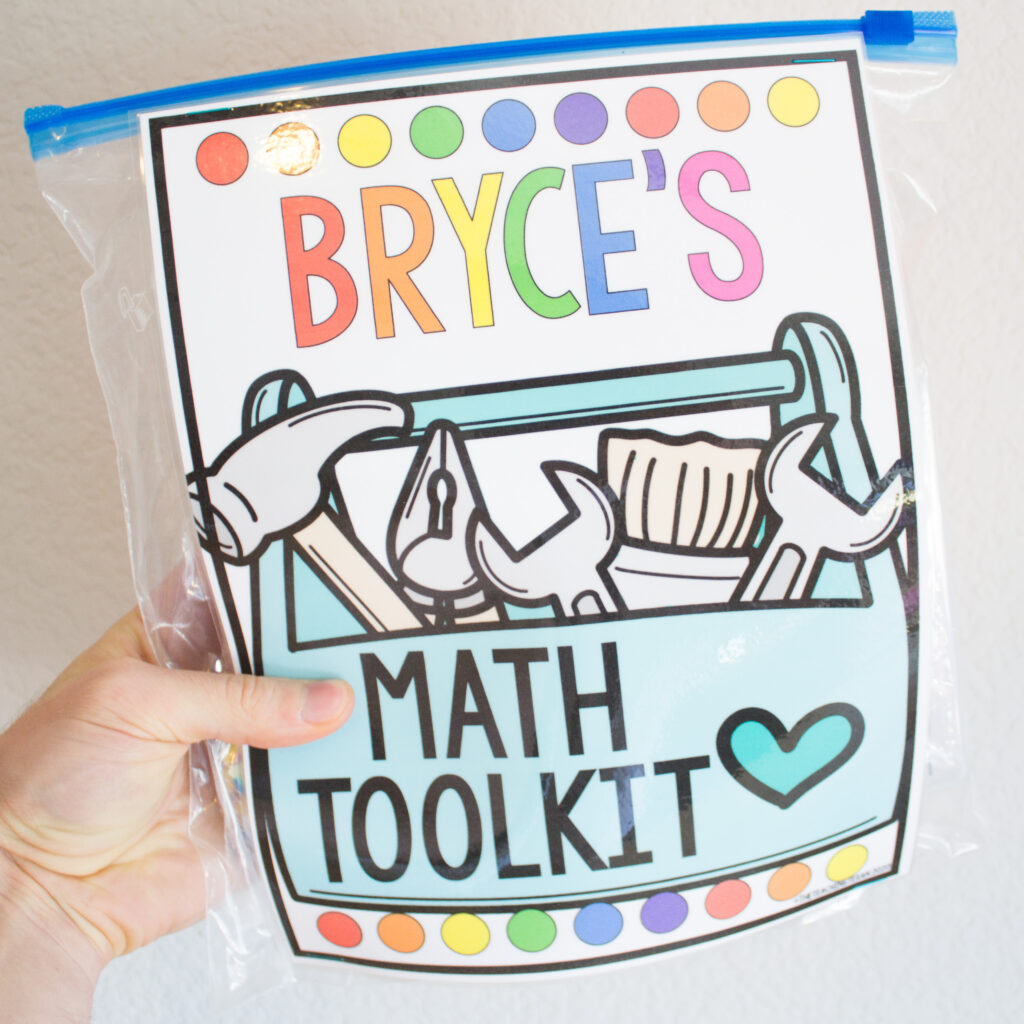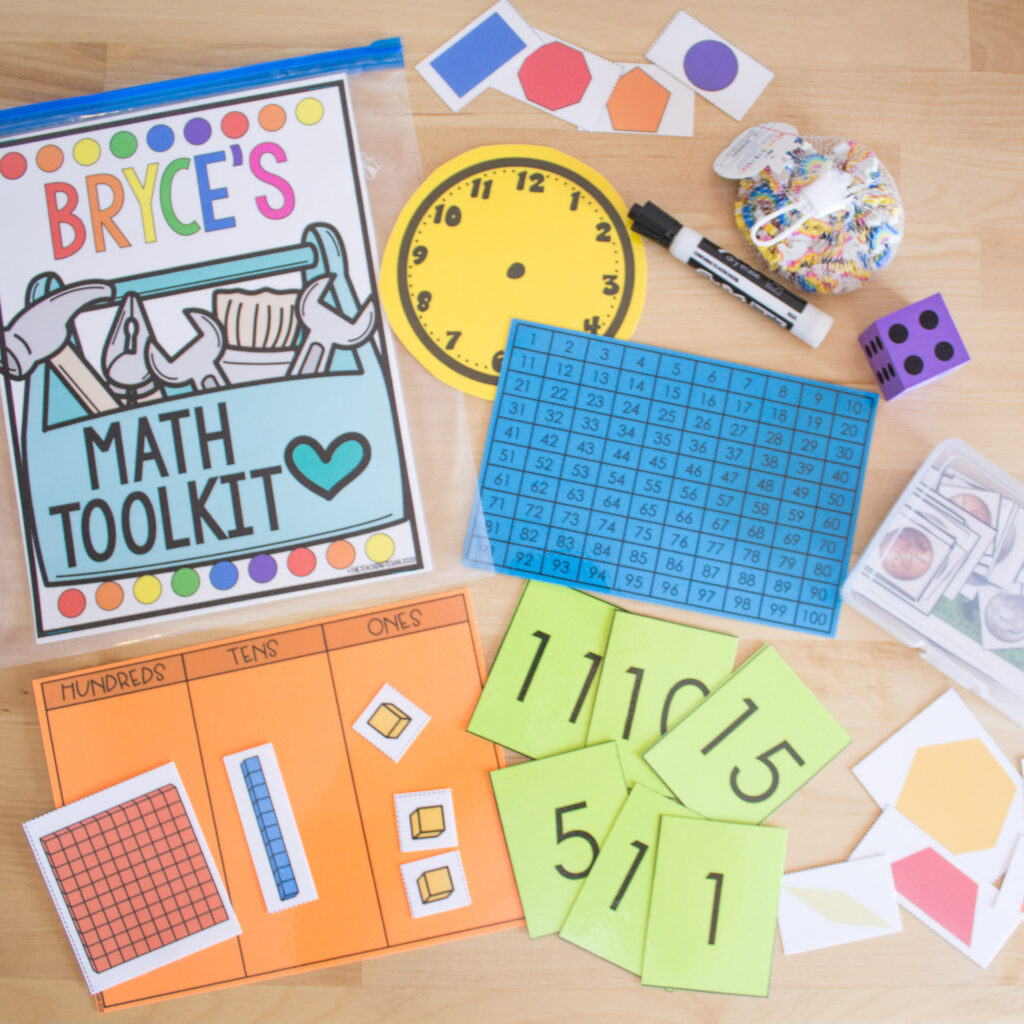How to: Create Personal Student Math Toolkits
Hello and welcome to the WEIRDEST SCHOOL YEAR OF YOUR CAREER. While last year ended with quite an unexpected twist, not something anyone could have predicted, we were definitely running in emergency mode, boots on the ground, working hard in overdrive to get kids what they needed to learn remotely and hopefully support parents in the process. This year feels like a whole new beast. We’re somehow expected to plan for the unplannable, be prepared for the unpreparable (sure, that’s a word now), and provide quality education for students online, in person, and a combination of the two.
Holy moly let’s just all take a collective breath.
*****
And another for good measure.
*****

Ok. This year is going to be unpredictable. We can all just admit that. But ALSO, we love our students and families and, even in this crazy environment, are committed to supporting their education no matter what. We’re all in this together. (*cue High School Musical track*) So whether your school is 100% distance learning, attempting a face-to-face option, or some kind of hybrid model, let’s dive in and chat about how we can provide quality math units with the minimal amount of stress. Yes, I will be attempting the impossible: trying to siphon off stress from this crazy mess of a back to school season.
Get Kids What They Need
Whatever your district is requiring, it’s clear that it won’t be safe for students to share supplies this year unless somehow you’ve got time in the day to sanitize things between each use. From a “work smarter not harder,” perspective, I’m jumping on the train of individual supplies for everyone.
The immediate problem with the “every student needs their own supplies,” approach is this can get expensive pretty quickly and is likely way outside of budget realities for many schools. But let’s start our school year prep in an ideal world and assume you have the budget and adjust from there.
Build a Math Kit
The thing is, we need to focus on keeping learning (especially distance learning) as hands-on as possible this year. ESPECIALLY since so many students likely missed key learning points in the spring during the beginning of all this madness. Hands-on learning is more important now than ever. Endless worksheets (especially via Zoom) will not be enough to keep students’ education on track. Besides being important for our kinesthetic learners in the room, research shows us clearly that, “hands-on learning is uniquely positioned to support or elevate any type of learner,” (The New School). Plus, if students are at home, creating these supplies ahead of time and coordinating a drop off or pick up of them, will put everyone on an even playing field and imitate the classroom environment much more effectively than just crossing our fingers and hoping everyone has adequate access to paper and pencils.

I’d recommend every student have a plastic box (with a lid), zippered pouch or even a gallon zippered bag that’s clearly labeled and exclusively theirs. Store it in their desk, locker, or cubby. The positive side of this is that students LOVE when things solely belong to them. It’s special and exciting. We’ll probably have to work on sharing a lot next year, but we can put a pin in that for now.
This kit will serve as each student’s “Math Kit” and should store all kinds of fun manipulatives. Remember, we’re beginning our planning in an ideal world so, if you can swing it, here’s everything I can possibly think of that could be beneficial in this math kit.
- Coins
- Base 10 Blocks
- Clock
- Measuring tools
- 100’s charts
- Counting manipulatives (Target dollar spot mini erasers are great for this!!)
- Number cards or playing cards
- Die/Dice
- Place Value Mat
- White board
- Dry Erase Marker
- Math journal
If you can include all those goodies in individual boxes for your students, your math blocks will be a breeze. They’ll have everything they need at the literal tips of their fingers without having to leave their desks for one second.
And for all my teachers who want to embrace in-person and virtual learning, I’ve got some great digital resources for you that will be sure to make math time go by in the blink of an eye.
If you’re internally screaming at me because how dare I assume you’ve got the budget to buy 20 clocks for all your kids, I hear you. Don’t despair. I didn’t forget about you, I PROMISE! In fact, I created a free resource just for you. Because no classroom should go without the supplies they need to thrive at any time, but especially this year y’all we all need a little boost.

For you, I’ve got a printable resource of manipulatives that’s FREE (yes, F-R-E-E) that will help you start creating quality math kits for your kids with no budget at all.

The most important thing we can do for our kiddos this year is to avoid panic, friends. Take another deep breath. Let’s come full circle and end this post like we started it.
******
And again.
*****
I’ll be here with more math posts and ideas all year y’all. And if you missed our literacy series, head here to catch up!

I wish I had discovered your site in April when we went online – could have saved myself a lot of worry with teaching Maths.
I hope this resource helps during this different time!
Do I need to subscribe to get the math tool kit or did I miss the link?
Hi there! Once you’ve submitted to join the newsletter you’ll receive a welcome email that has the password to the freebies section of our website. That’s where the free math toolkit resource is housed.
I signed up, but still don’t have access to this resource. Am I doing something wrong?
Hi there! Once you’ve submitted to join the newsletter you’ll receive a welcome email that has the password to the freebies section of our website. That’s where the free math toolkit resource is housed.
I am down to the wire and have not been able to locate my free math tool kit resource. Please help. It will be perfect for my students!
Thank you!
Hi Diane,
Once you’ve submitted to join the newsletter (you can do that right from this blog post) you’ll receive a welcome email that has the password to the freebies section of our website. That’s where the free math toolkit resource is housed. Check your spam folder if you haven’t received it. If you used a school email address your firewalls may have blocked the email, so I recommend using a personal email address. If you still have questions it’s easiest to reach out via email to theteachingtexan@gmail.com
Best,
Bryce
Hey Bryce, I signed up and confirmed but there is not a password in your welcome email. Did I miss it?
It’s at the bottom of the email you received just below the link to the freebie portion of our website. 🙂